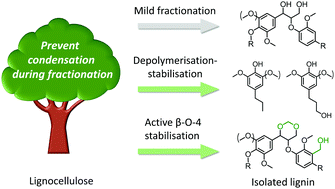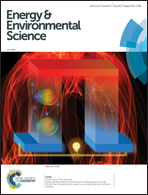Lignin-first biomass fractionation: the advent of active stabilisation strategies
Abstract
During the past decade, a growing scientific community is eagerly seeking for effective lignin valorisation approaches. Thought-out utilisation of the world's most abundant resource of bio-aromatics could substantially augment the profitability of future lignocellulosic biorefineries. From a multitude of complementary valorisation opportunities (e.g., composite materials, dispersants, carbon fibres), harnessing lignin as renewable feedstock for chemicals forms an alluring challenge. However, a root cause that hampers its full exploitation, is an historically grown and deeply ingrained (mis)conception, stating that lignin is merely considered as a subordinate opportunity to derive some extra added-value, without being of primary concern. Unfortunately, this mind-set doesn't reckon with the fact that lignin is prone to irreversible degradation, leading to recalcitrant condensed structures which are difficult to disassemble into a handful of chemicals. In response, new biorefinery schemes are being developed, wherein the valorisation of lignin is regarded as one of the primary targets. At the heart of these alternative biorefineries are fractionation strategies that aim to prevent structural lignin degradation, hereby enabling an efficient and selective lignin-to-aromatic conversion. Of particular interest are fractionation methods that implement active stabilisation mechanisms that prohibit the problem of lignin condensation, without compromising the structural integrity of the carbohydrates. This new and emerging biorefinery paradigm is termed lignin-first, and includes two distinct strategies to actively prevent structural degradation during biomass fractionation, namely (i) tandem depolymerisation–stabilisation of native lignin, and (ii) active preservation of β-O-4 bonds.



 Please wait while we load your content...
Please wait while we load your content...